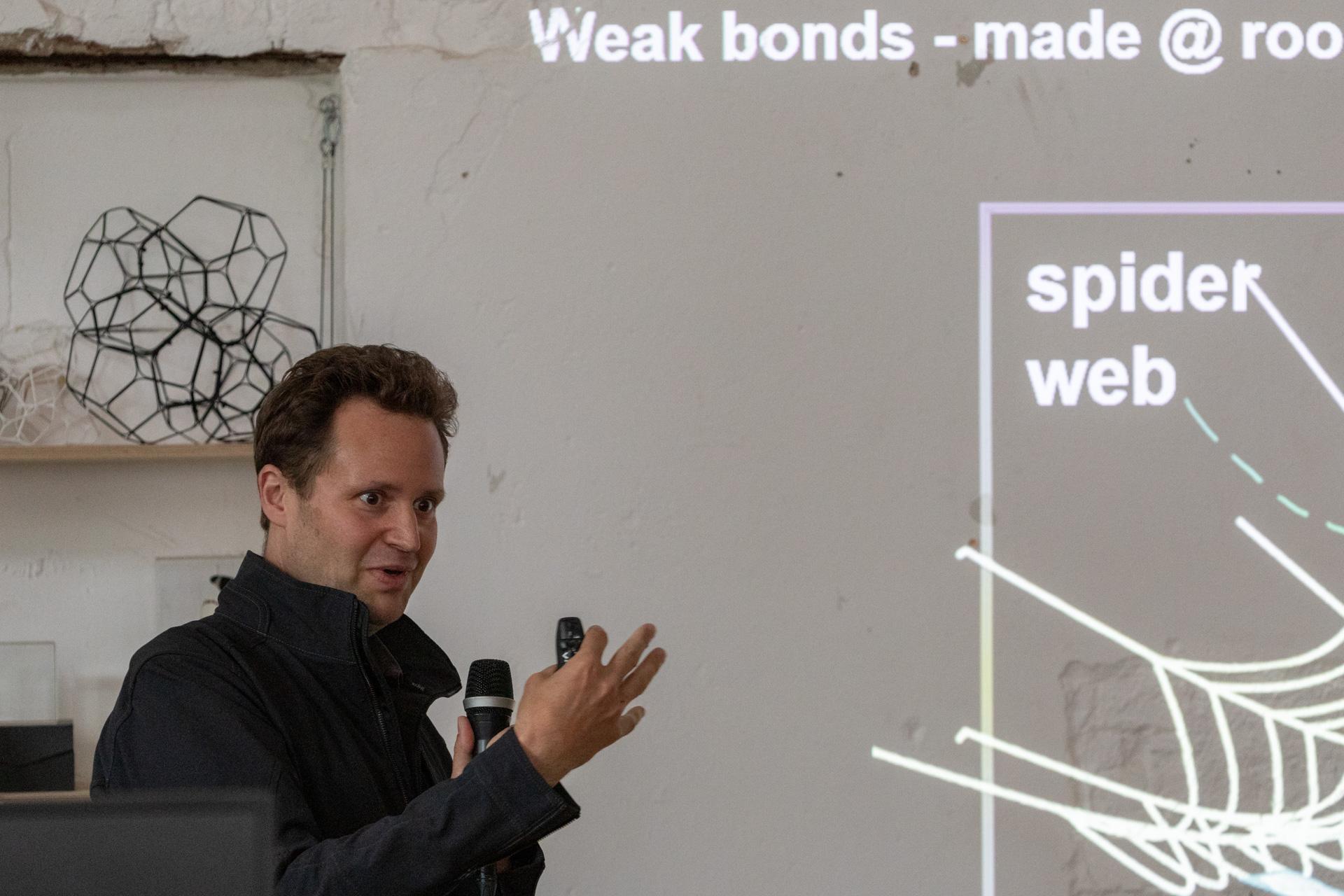
Studio members from multidisciplinary backgrounds, including designers, architects, anthropologists, biologists, engineers, art historians, curators, and musicians work in the hybrid environment of workshop, office, the Arachnophilia Research Laboratory and Aerocene community-enthusiasts. The studio gradually activated and renovated the previously unoccupied building, which was constructed in 1916, and the neighbouring multi-story factory. The studio relocated to Berlin in 2012 and, after a brief interim, moved into the former administrative building of Actien-Gesellschaft für Anilin-Fabrication (AGFA) in Berlin-Rummelsburg. Saraceno lives and works in and beyond the planet Earth.Īfter studying art and architecture in Buenos Aires, Frankfurt am Main, and Venice, Tomás Saraceno established his studio in Frankfurt am Main in 2005. Saraceno has participated in numerous festivals and biennales, including the 17th Venice Architecture Biennale (2020) and the 53rd and 58th Venice Biennales (2009, 2019). He has also been the subject of solo exhibitions and permanent installations at museums and institutions internationally, including Palais de Tokyo, Paris (2018) Museo de Arte Moderno, Buenos Aires (2017) K21 Kunstsammlung Nordrhein-Westfalen, Ständehaus, Dusseldorf (2013) the Metropolitan Museum of Art, New York (2012) and Hamburger Bahnhof – Museum für Gegenwart, Berlin (2011).


He has held numerous residencies including MIT Center for Art, Science & Technology (2012–), Atelier Calder (2010) published in Nature and PNAS presented a TED talk staged artistic interventions with COP20, COP21, and COP26 has lectured at Princeton, Columbia, Centre Pompidou, Herald Design Forum, Hirshhorn Museum, CCK, and Interspecies Internet among other locations.

Saraceno’s work with local communities, scientific researchers, and institutions around the world, aims to seek out a more equal balance of human, techno- and bio-diversity, with the understanding that knowledge is produced from specific situations. Nggàm dù, a web portal by the spider diviners of Somié, Cameroon, meditates on the possibilities of reciprocal, intercultural and inter- and intraspecies relations. With researchers at the TU Darmstadt, Saraceno developed the Spider/Web Scan, a novel, laser-supported tomographic technique that allowed precise 3-D models of complex spider/webs to be made for the first time. With Aerocene, Pacha set 32 world records, marking the most sustainable flight in human history.Īrachnophilia, an interdisciplinary, research-driven community, also emerged from the artist’s more than 10 years of collaboration with humans, spiders, and their webs. The 2020 project Fly with Aerocene Pacha, stood in solidarity with the indigenous communities of Salinas Grandes, Jujuy and their protest against harmful lithium extraction practices in northern Argentina.
#Bandcamp arachnophilia free
Aerocene has floated 7,060 minutes in the air free from carbon in 110 tethered flights, 15 free flights, and 8 human flights.

Tomás Saraceno is an Argentina-born, Berlin-based artist whose projects dialogue with forms of life and life-forming, rethinking dominant threads of knowledge in the Capitalocene era and recognizing how diverse modes of being engage a multiplicity of vibrations on the Web of Life.įor more than two decades, Saraceno has activated projects aimed towards rethinking the co-creation of the atmosphere, including Museo Aero Solar (2007–) and the Aerocene Foundation (2015–), towards a society free from carbon emissions and the abuses of the Capitalocene.


 0 kommentar(er)
0 kommentar(er)
